Siddhant Doshi
Learning to Precode for Integrated Sensing and Communications Systems
Mar 11, 2023Abstract:In this paper, we present an unsupervised learning neural model to design transmit precoders for integrated sensing and communication (ISAC) systems to maximize the worst-case target illumination power while ensuring a minimum signal-to-interference-plus-noise ratio (SINR) for all the users. The problem of learning transmit precoders from uplink pilots and echoes can be viewed as a parameterized function estimation problem and we propose to learn this function using a neural network model. To learn the neural network parameters, we develop a novel loss function based on the first-order optimality conditions to incorporate the SINR and power constraints. Through numerical simulations, we demonstrate that the proposed method outperforms traditional optimization-based methods in presence of channel estimation errors while incurring lesser computational complexity and generalizing well across different channel conditions that were not shown during training.
Graph Neural Networks with Parallel Neighborhood Aggregations for Graph Classification
Nov 22, 2021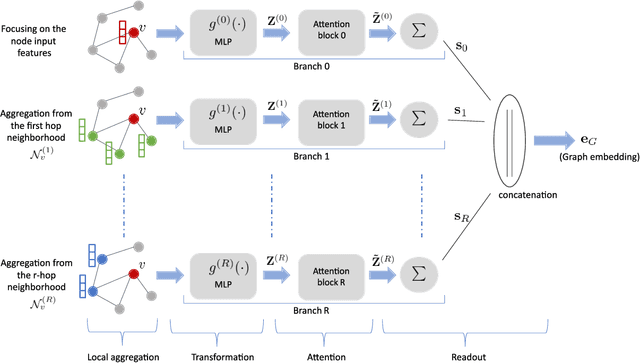

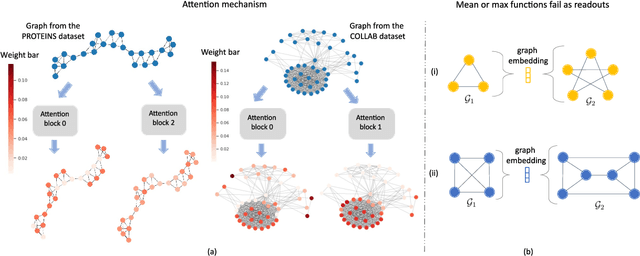

Abstract:We focus on graph classification using a graph neural network (GNN) model that precomputes the node features using a bank of neighborhood aggregation graph operators arranged in parallel. These GNN models have a natural advantage of reduced training and inference time due to the precomputations but are also fundamentally different from popular GNN variants that update node features through a sequential neighborhood aggregation procedure during training. We provide theoretical conditions under which a generic GNN model with parallel neighborhood aggregations (PA-GNNs, in short) are provably as powerful as the well-known Weisfeiler-Lehman (WL) graph isomorphism test in discriminating non-isomorphic graphs. Although PA-GNN models do not have an apparent relationship with the WL test, we show that the graph embeddings obtained from these two methods are injectively related. We then propose a specialized PA-GNN model, called SPIN, which obeys the developed conditions. We demonstrate via numerical experiments that the developed model achieves state-of-the-art performance on many diverse real-world datasets while maintaining the discriminative power of the WL test and the computational advantage of preprocessing graphs before the training process.
Dr-COVID: Graph Neural Networks for SARS-CoV-2 Drug Repurposing
Dec 03, 2020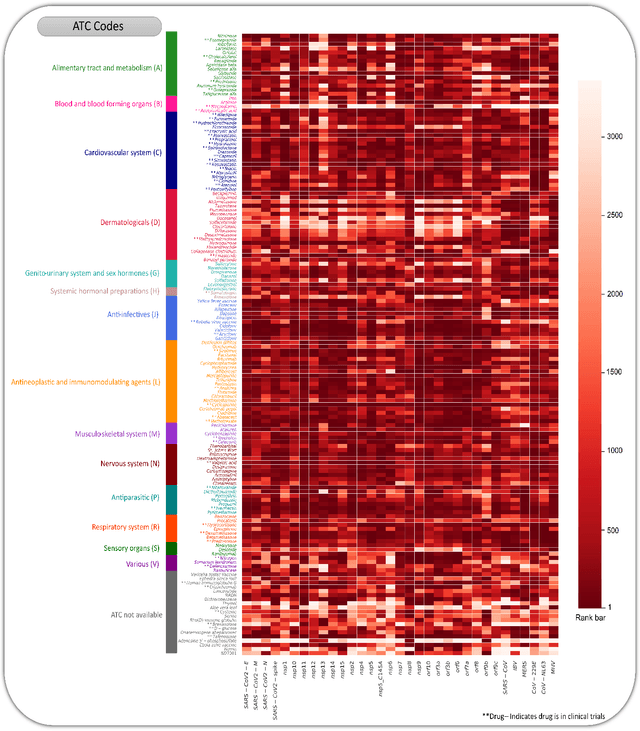
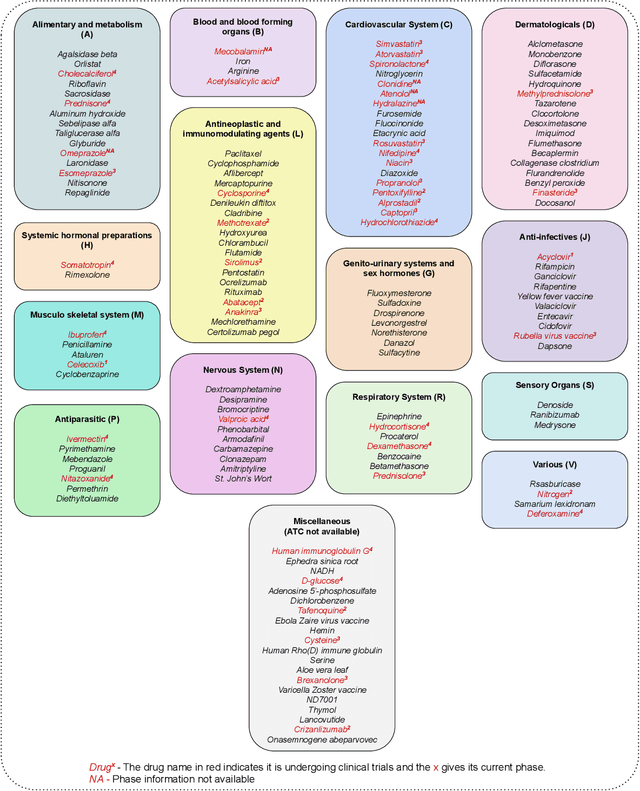
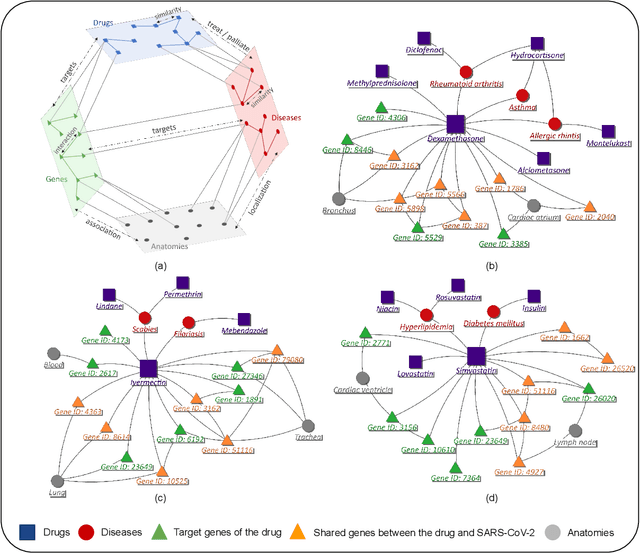
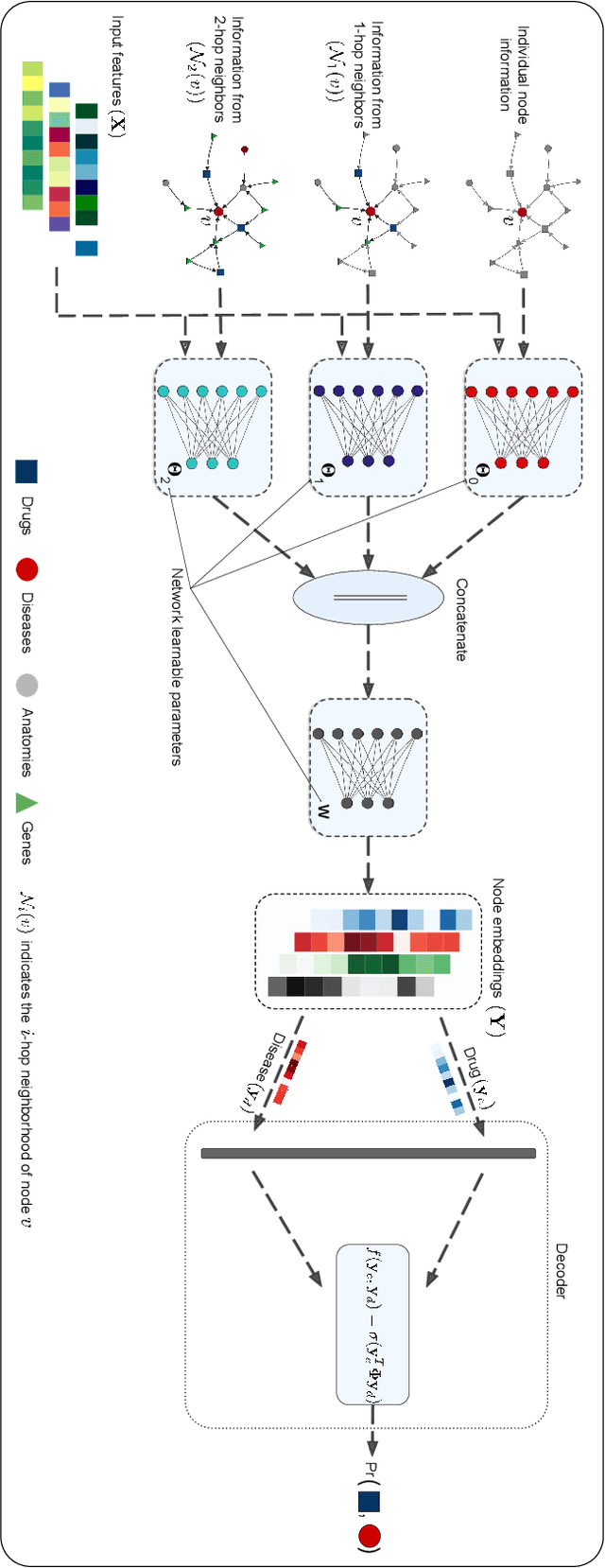
Abstract:The 2019 novel coronavirus (SARS-CoV-2) pandemic has resulted in more than a million deaths, high morbidities, and economic distress worldwide. There is an urgent need to identify medications that would treat and prevent novel diseases like the 2019 coronavirus disease (COVID-19). Drug repurposing is a promising strategy to discover new medical indications of the existing approved drugs due to several advantages in terms of the costs, safety factors, and quick results compared to new drug design and discovery. In this work, we explore computational data-driven methods for drug repurposing and propose a dedicated graph neural network (GNN) based drug repurposing model, called Dr-COVID. Although we analyze the predicted drugs in detail for COVID-19, the model is generic and can be used for any novel diseases. We construct a four-layered heterogeneous graph to model the complex interactions between drugs, diseases, genes, and anatomies. We pose drug repurposing as a link prediction problem. Specifically, we design an encoder based on the scalable inceptive graph neural network (SIGN) to generate embeddings for all the nodes in the four-layered graph and propose a quadratic norm scorer as a decoder to predict treatment for a disease. We provide a detailed analysis of the 150 potential drugs (such as Dexamethasone, Ivermectin) predicted by Dr-COVID for COVID-19 from different pharmacological classes (e.g., corticosteroids, antivirals, antiparasitic). Out of these 150 drugs, 46 drugs are currently in clinical trials. Dr-COVID is evaluated in terms of its prediction performance and its ability to rank the known treatment drugs for diseases as high as possible. For a majority of the diseases, Dr-COVID ranks the actual treatment drug in the top 15.
 Add to Chrome
Add to Chrome Add to Firefox
Add to Firefox Add to Edge
Add to Edge